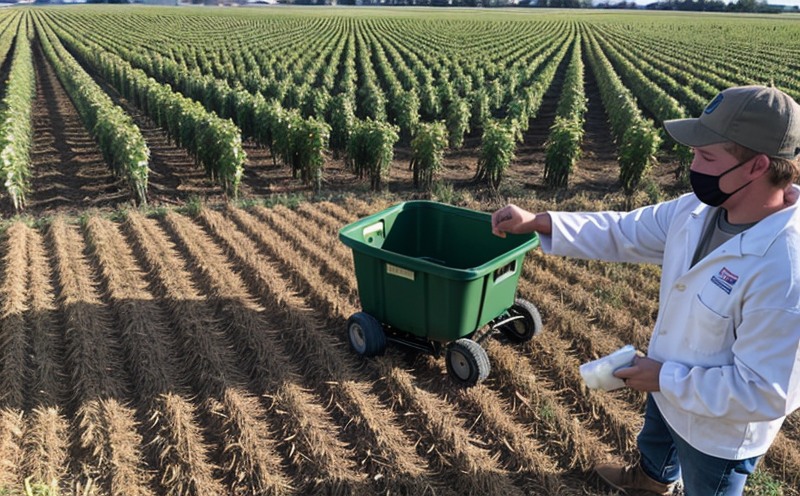Insect Infestation Testing in Stored Grains
Post-harvest quality testing is essential to ensure that stored grains meet the required standards and are fit for market or further processing. One critical aspect of this testing involves insect infestation, which can significantly impact grain quality and safety. Insects such as beetles, weevils, and moths can damage grain, reducing its quality and making it unsuitable for consumption or sale.
Insect infestation testing in stored grains is a specialized process that involves several steps to ensure accurate detection of insect presence and population levels. The first step is the collection of samples from various parts of the storage facility to ensure a representative sample. Once collected, these samples undergo careful examination using optical microscopes and other advanced imaging techniques.
The next crucial step in this process involves laboratory analysis using both traditional methods like entomological sieves and modern technologies such as X-ray imaging systems. These tools help identify even the smallest infestations that might otherwise go unnoticed. After identification, detailed reports are generated outlining the extent of infestation and providing recommendations for remediation.
Understanding the lifecycle stages of insects is vital in developing effective control strategies. Different insect species have distinct life cycles which influence their susceptibility to various treatments. For instance, diapause (a state similar to hibernation) can affect how quickly an insect population responds to treatment measures. Knowledge about these factors allows for more precise timing and application methods.
Once the extent of infestation is determined, appropriate remediation actions are taken based on local regulations and industry best practices. Common treatments include fumigation with chemicals or physical removal by vacuuming or high temperature drying processes. Proper documentation ensures compliance with regulatory requirements while also maintaining transparency for stakeholders involved in supply chains.
Post-harvest quality testing plays a critical role not only in ensuring food safety but also in enhancing overall agricultural productivity. By identifying and managing insect infestations early on, farmers can minimize losses due to spoilage or contamination. This leads to improved economic returns for producers who can sell their goods at higher prices if they meet stringent quality standards.
| Sector | Application |
|---|---|
| Agriculture | Monitoring and managing insect populations in stored grains to ensure quality. |
| Food Processing | Ensuring raw materials meet strict standards before further processing. |
| Logistics & Distribution | Preventing infested grains from being shipped internationally or domestically. |
Industry Applications
Insect infestation testing in stored grains finds extensive application across multiple sectors. In agriculture, it helps farmers maintain grain quality throughout storage by detecting early signs of pest activity. For food processors, this service ensures that raw materials used in production are free from harmful organisms before being incorporated into final products.
- Preventing contamination during transportation and distribution.
- Avoiding costly rejections at border crossings when exporting agricultural produce.
- Meeting international standards for grain quality set by organizations like the World Organization for Animal Health (OIE).
Customer Impact and Satisfaction
Implementing insect infestation testing in stored grains offers numerous benefits to customers, including enhanced product safety and reduced loss. By eliminating potential sources of contamination, businesses can maintain customer trust and loyalty. Additionally, accurate testing results aid in making informed decisions regarding storage conditions and pest management practices.
Customers who rely on this service often find themselves better positioned to comply with strict regulatory requirements imposed by governments and international bodies. They benefit from increased efficiency within their supply chains as infested batches are quickly identified and addressed, minimizing downtime associated with recall campaigns or rejections at destination ports.
Environmental and Sustainability Contributions
- Promoting sustainable farming practices by preventing unnecessary pesticide use through targeted treatment approaches.
- Reducing waste by ensuring only uncontaminated grains reach marketplaces or processing facilities, thus conserving resources used during production.
- Supporting biodiversity conservation efforts by reducing the spread of invasive insect species that could harm native ecosystems if introduced into new environments.





